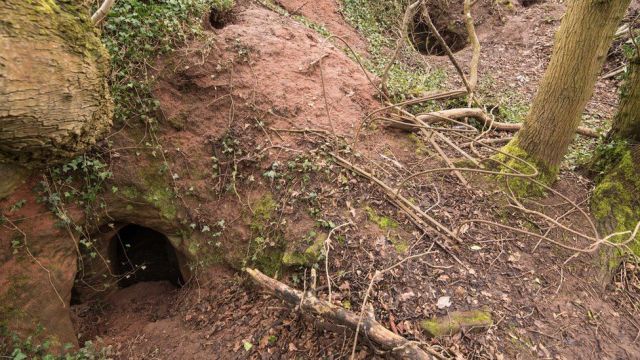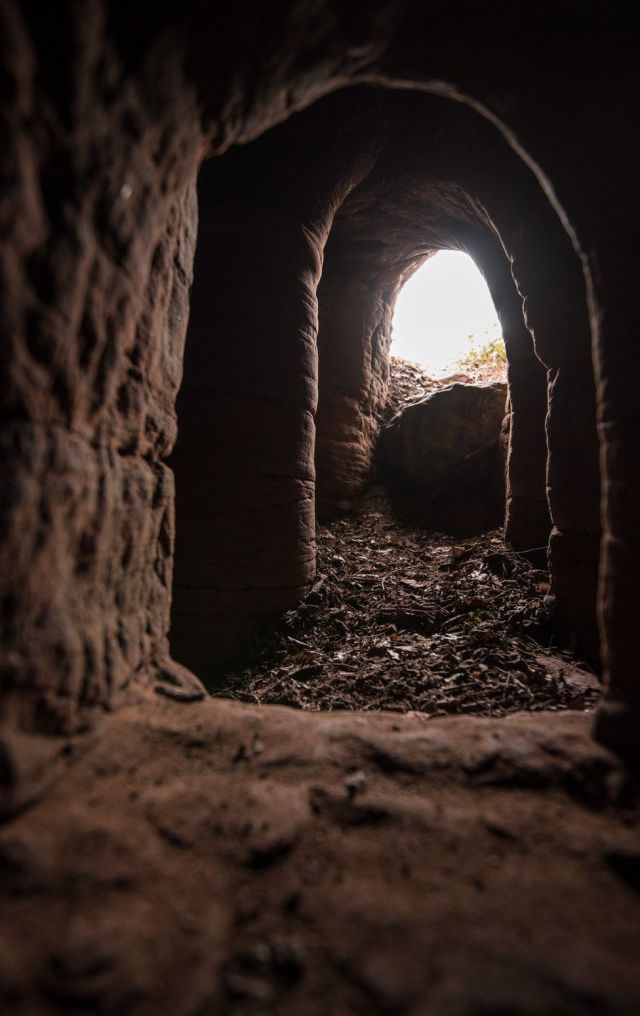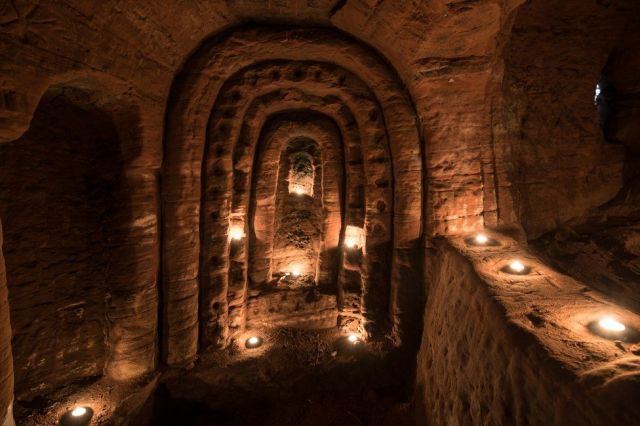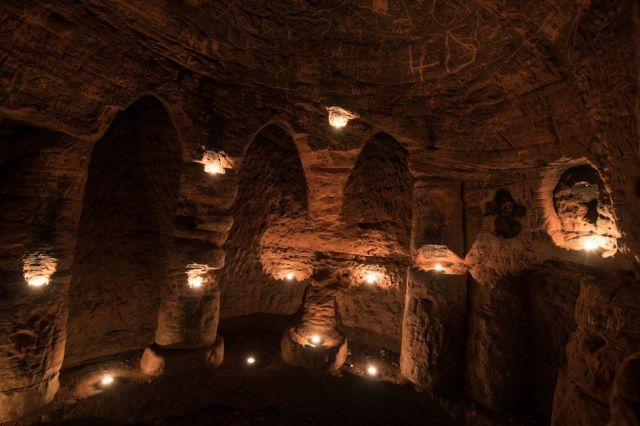

| Online: | |
| Visits: | |
| Stories: |

| Story Views | |
| Now: | |
| Last Hour: | |
| Last 24 Hours: | |
| Total: | |
Knights Templar Underground Tunnel Complex Dating Back 700 Years Found Beneath Rabbit Hole (Video)

A photographer has uncovered a stunning 700-year-old underground complex believed to be linked to the Knights Templar.
Beneath unassuming holes in a farmer’s field near Shifnal, in Shropshire, lie untouched caves allegedly used by the medieval order that fought during the Crusades.
Photographer Michael Scott, from Birmingham, set out in search of the caves and came back with pictures of the remarkable underground network.
The pictures of the Caynton caves show archways and a series of walkways carved out of sandstone.
Some chambers are so small that those exploring have to enter them on hands and knees, the Shropshire Star reports.
There are rumours the caves have also been visited by pagans and druids wanting to hold ceremonies and are popular at solstice and Halloween, the paper adds.
The unassuming hole is the entrance to a man-made cavern, hidden less than a metre beneath a farmer’s field.
The Shropshire caves date back around 700 years when they were used by followers of the Knights Templar – a medieval religious order that fought in the Crusades.
These images come from photographer Michael Scott, from Birmingham, who set out in search of the historical wonder after seeing a video of it online.
Some chambers are so tiny that those exploring have to enter them on hands and knees.
The Caynton Caves, hidden in dense woodland near Shifnal, were apparently carved out of sandstone by followers of the Knights Templar.
The Knights Templar were a wealthy order of knights created in 1129 by the Pope who wore distinctive white mantles with a red cross over their armour.
Its original purpose was to protect pilgrims from bandits on their journey to Jerusalem.
It is said that the hand-made caves in Shropshire were used as a secret place of worship.
The Templars built their churches with circular naves, in imitation of the circular Church of the Holy Sepulchre in Jerusalem.
In 2012, it was reported that the owners of the caves closed them to people wanting to visit after they found they had been filled with candles, graffiti and rubbish. The entrance to the caves was sealed up in attempt to keep the trespassers at bay.
There are rumours that the caves have also been visited by pagans and druids wanting to hold ceremonies, and are popular at solstice and Halloween.
It is thought the caves have now been opened again although the Shropshire Star has been unable to contact the owners.
It is not the only Shropshire location with links to the Templars.
Within Ludlow Castle is an early Norman chapel dedicated to St Mary Magdalene.
Some people say it may have been associated with the Templars as the interior carvings include two Templar crosses and because of the group’s affiliation to St Mary Magdalene. It also has a round nave, again in the image of the Holy Sepulchre Church.
Penkridge Hall in Leebotwood was built on the site of the former Lydley Preceptory, a building serving as an administration centre for a group of Templars.
It was founded in 1158 and closed in 1308 when the order was dissolved.
St Jame’s Church in Cardington was acquired by the Templars in 1186 and the first documented priest was Arnulf. After the suppression of the Templars in 1308, Cardington Church was taken over by the Crown and given to the Knights Hospitaller in 1314, an order of knights created in 1113 by the Pope to provide care for sick, poor or injured pilgrims.
Stanton Long Grange was founded in 1221 as a farm and closed in 1308 when the order was dissolved.
The site is at the hamlet of Brookhampton but nothing now remains.
In Herefordshire, Holt Preen Grange was founded in 1232 as a farm and closed in 1308 when the order was dissolved. All surface remains were destroyed when Holt Farm was built on the site. Similar caves dating back about 700 years in Royston, Hertfordshire, were under attack from an infestation of worms eating the chalk walls behind them.
The beehive-shaped chamber was cut out of a 180ft-thick seam of chalk and stretches 30ft beneath the centre of the market town, underneath a betting shop.
It was uncovered by chance during building work in 1742 and puzzled historians ever since.




Source Yahoo and Shropshire Star and BBC
Check out more contributions by Jeffery Pritchett ranging from UFO to Bigfoot to Paranormal to Prophecy
~~~~~
Most people who use social media have figured out that Facebook and Google are in cahoots with the government. For those who are well aware of the issues, it’s high time you switched over to Seen.life. It is a website that is similar to Facebook but without all the censorship.
Firearm friendly, you may buy sell or trade anything allowed by site TOS rules.




Would seem to be a pretty nice lair for Old Bigfoot, wouldn’t it Jefferey?
Nice find!
I’ll let someone else search for it on here, if it isn’t there then it should be, might mean the local council knows nothing about it. http://www.heritagegateway.org.uk/gateway/